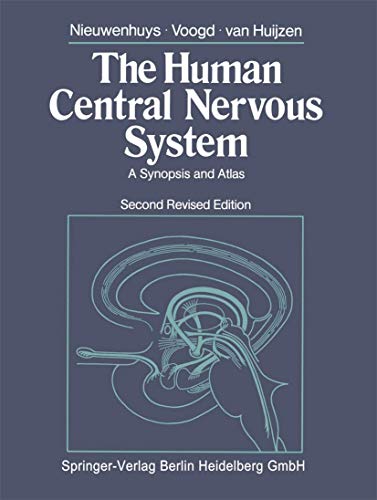Synopsis
The particularly good reception enjoyed by our "The Human Central Ner vous System, a Synopsis and Atlas" has made a second edition necessary, hardly more than two years after its first appearance: This new edition enabled us to make a number of corrections, but it was judged premature to undertake a thorough updating of the text. However, a major improvement - suggested by some reviewers and many colleagues - is that in this new edition the abbreviations in the figures have been replaced by the full Latin terms. We want to emphasize that the study of this book can facilitate and deepen but never replace the study of the anatomical preparation. Acquaintance and histology of nervous tissue has been taken for with the basic cytology granted. This book is evidently often consulted with the aim of looking up a particular and its topographical relations. This cer structure together with its name is tainly one of the purposes of the book. We are, however, of the opinion that during a systematic study of the figures showing the functional systems in part IV, perusal of the accompanying text will be necessary. As a matter of fact the spatial representations of the fibre systems are no more than a visualization of the most salient features discussed in the text. The pictures are so to speak a snapshot of the current knowledge of a particular functional system within the central nervous system; no less, but no more either.
About the Author
Professor Nieuwenhuys received his M.D. and Ph.D. degrees from the University of Amsterdam. He worked for many years at the Netherlands Institute for Brain research (now: Netherlands Institute for Neuroscience: NIN) in the same city. During 25 years, he was a full professor at the Radboud University of Nijmegen, where he held chairs for human neuro-anatomy at the medical faculty, and for comparative neuro-anatomy at the faculty of natural sciences. After his retirement, he returned to the N.I.N. Professor Nieuwenhuys is the author of numerous scientific publications dealing with the structure of the CNS of invertebrates, vertebrates and man. He published a number of books with Springer Verlag, including The Human Central Nervous System (with J. Voogd and Chr. Van Huijzen; first edition 1976; second edition 1978; third edition 1988; fourth edition 2007), The Chemoarchitecture of the Brain (1985), The Central nervous System of Vertebrates (with H.J. ten Donkelaar and J.C. Nicholson; 3 vols. 1998).Professor Voogd received his M.D. and Ph.D. degrees from the University of Leiden (the Netherlands). He held chairs of human (neuro)anatomy at the University of Leiden, the Free University at Brussels and at the Erasmus University at Rotterdam. Professor Voogd is a worldwide known authority on the structural and functional organization of the cerebellum of vertebrates and man, on which he published numerous regular publications and reviews. With R. Nieuwenhuys and Chr. Van Huijzen he published The Human Central Nervous System (fourth edition 2007). He contributed chapters to several handbooks, among which the Central nervous System of Vertebrates (R. Nieuwenhuys, H.J. ten Donkelaar and J.C. Nicholson, Springer, 1998) and The Human Nervous System (G. Paxinos and J.K. Mai, eds; Elsevier, 2nd edition, 2004). Professor Voogd is a member of the editorial board of the Journal of Comparative Anatomy.Christiaan van Huijzen, educated as an artist, became involved in several research projects in different scientific disciplines. From 1955 he was head of the Illustration Department of the medical faculty in Nijmegen and in 1971 he moved to the Anatomy Department, where he participated in educational and research projects. Together with Dr. J.H.M. van der Straaten he realized a multimedia project on topographical anatomy, which includes a.o. seven lifesize charts of the human body.
"About this title" may belong to another edition of this title.
